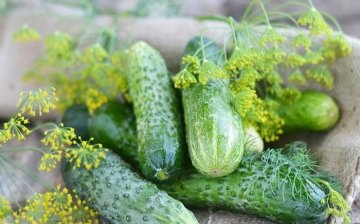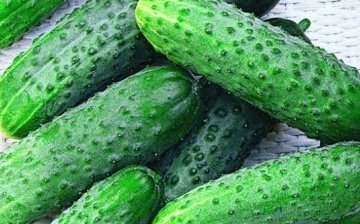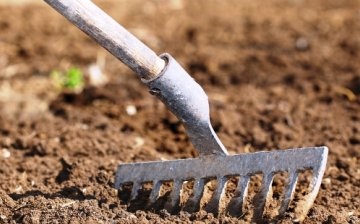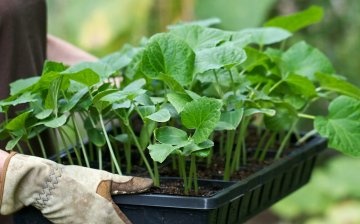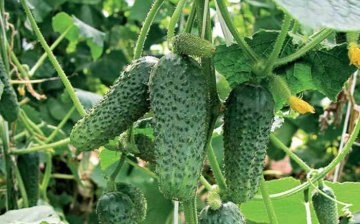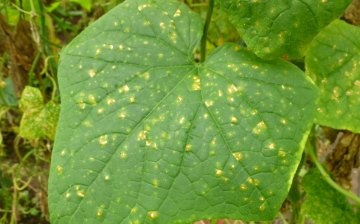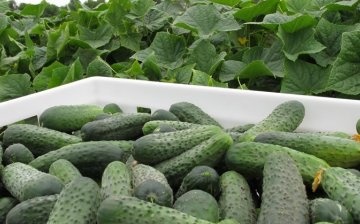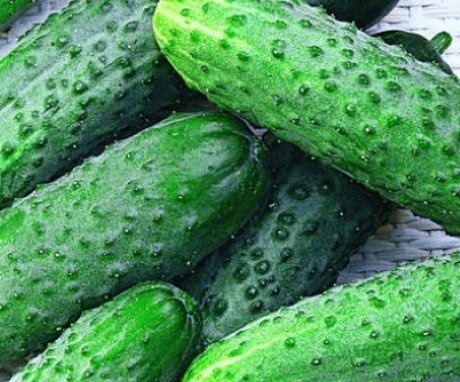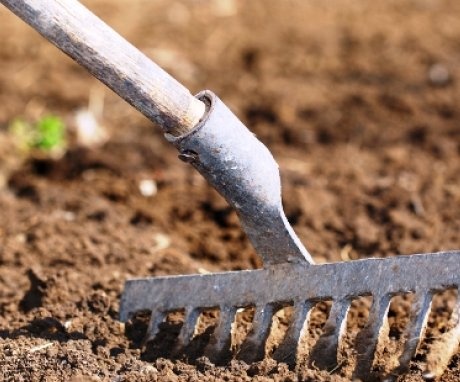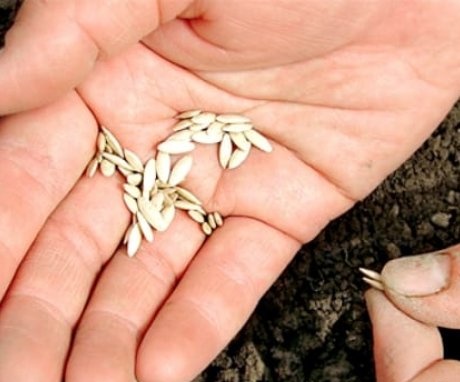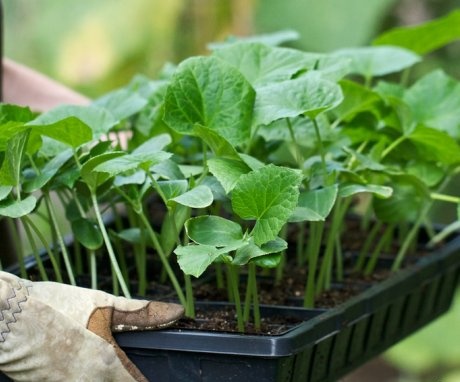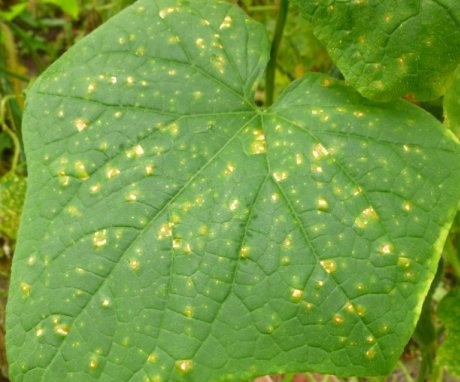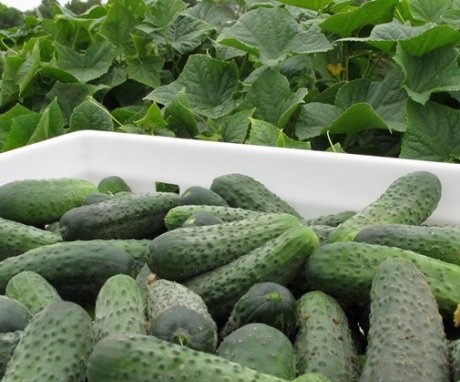How to grow cucumber variety Courage correctly?
Well, what a feast can be without cucumbers. Variety Courage - these are cucumbers that meet absolutely all the requirements. India is considered the homeland of this variety, but these cucumbers have also taken root well in our country. If you are going to grow cucumbers in an open place, then this variety is ideal for this. More and more often it can be found in vegetable gardens.
Hybrids are increasingly preferred. They are more resistant to diseases and are self-pollinated, which of course makes them much easier to grow. Courage is a first-generation hybrid cucumber. On the package with seeds you will find the designation F 1. But buy seeds only from trusted producers in order to avoid unpleasant situations in the future.
Content:
- Characteristic features of the variety
- Preparatory work
- Sowing seeds in open ground
- Planting cucumber seedlings in the ground
- Cucumber Care Tips
- Diseases and pests
- Harvesting and storage
Characteristic features of the variety
Newbies are almost always wary of hybrid varieties. But cucumbers of this particular variety do not have negative reviews. They have always been famous for their juicy taste and high yield. There is no need to create any special conditions for them, and they adapt to absolutely any climate. Cucumbersare undoubtedly the most popular vegetable crop. It is always good when you have an idea of the properties of a variety in order to avoid mistakes and choose the one that is ideal for you.
Cucumbers are 90% water. They are doused with essential vitamins, fiber, and do not contain any fats. Such a vegetable pleases us all year round.
One of the distinguishing features of this variety is that it blooms with “bouquets”.
Less and less often it is grown in open ground, more in greenhouses and hotbeds. This variety of cucumbers was developed by the selection firm "Gavrish". And the hybrid "Courage F1" was the latest and most successful development. The appearance of cucumbers after planting is about 50 days. This hybrid is also called early ripening. It can also be used 2 times per season.
Features of the Kurazh variety:
- The stem of the Kurazh variety reaches a height of about 3.5 m.
- The fruit is cylindrical.
- Cucumbers of this variety have a dark green color.
- There may also be small white streaks.
- Bumps can be seen on the surface of the cucumber, they will be whitish in color.
- The fruits of the hybrid reach a length of 14-15 cm.
These cucumbers are perfect for absolutely everything. If you want a salad, they go well with all the other ingredients. If you want to roll them up in a jar, they are perfect for salting. Also, the fruits of this variety will withstand any tests: long-term storage or long-term transportation.
Preparatory work
You can choose for yourself any place for planting: greenhouse, greenhouse or open ground. But in the latter, the harvest will be much less. Of course, there are pluses, for example, a plant will be more resistant to disease and hardened, and it also forms a powerful root system.
If you still decide to sow them in the greenhouse, then it would be better to install a mesh or trellis structure (trellis). So the plant will receive more light, the fruits will not get dirty and rot. Cucumbers of this variety prefer loam, as well as black soil.If you do not have a greenhouse, but you really want to grow this variety, then choose a sunny, draft-free place.
In general, this vegetable does not like the cold, but it loves moisture very much, so when you choose a place in the open field, this must be taken into account.
How to prepare a garden bed? First, check the soil so that it does not turn out to be too acidic. The place should be prepared in the fall. Our garden bed will consist of certain layers, we take into account that each layer will be the same size, approximately 6-7 cm:
- A layer of fallen leaves, it will be the base.
- Land with compost.
- Fertile land with manure.
It is worth noting that each layer must be carefully watered, and a new one should be laid when the previous layer is completely saturated.
There is another option:
- A layer of fallen leaves, again it forms the basis.
- Grass.
- Manure layer.
- The last will be the fertile land.
Just like the previous time, moisten with urea and water, and wait for each layer to be saturated. These actions keep the seeds warm during sowing. If for some reason you could not prepare the garden in advance, do not be discouraged. In this case, there is a fallback:
- The first layer will be compost with needles, brushwood, straw and peat.
- The next manure or humus, whichever you like best, with wood ash.
- The last layer will be fertile soil, and we fill it with approximately 15-30 cm.
Before planting, a few days (usually 2-3) you need to pour boiling water over the garden bed and cover it with a film or any large plastic bag.
Sowing seeds in open ground
In advance, you will have to prepare not only the beds, but also the seeds. To begin with, those seeds that you purchased in a specialized store or ordered on the Internet are tested. For this we need seeds, water and a glass. We put the seeds in an empty glass and pour water there. Those seeds that float will need to be thrown out, but we spray the rest with a growth stimulant, and then process them with an ordinary manganese solution. It is important to warm them up on batteries before planting.
When sowing, the soil temperature should be at least 15 degrees.
We sow the seeds not deeply, about 2 cm. Immediately after planting, we cover our beds with foil or bags. This is done to protect against possible frost, as well as to create a greenhouse effect.
Planting cucumber seedlings in the ground
Planting in this way is carried out no earlier than 20-25 days after the first shoots. Remember, each bush must have at least 3 leaves, at least 3 roots, which will reach 8-10 cm in length.
Try not to plant them too close to each other, so you will not get any harvest.
The best option is to plant every 60 cm. Choose a cloudy day and plant it in the late afternoon, so that the seedlings do not have stress. If the landing was in open ground, it is important to cover them well for several days. And in the greenhouse these days it is necessary to maintain a constant humidity of at least 90%.
Cucumber Care Tips
Of course, the formation of the Courage variety differs from all the others. All lateral lashes and female flowers must be removed. We form one stem. It is thanks to this method that you will get a large and high-quality harvest. When you have cut everything to the end, we wrap the top twice around the grill and pinch it.
When growing this particular variety, it must be watered correctly:
- Water them in moderation, avoid overflow.
- If the summer is hot and without rain, then it is worth watering them every day. For 2 bushes from about 4-9 liters of water.
- If the summer is too rainy, then watering is carried out several times a week.
- We do not water the roots of each bush, but we irrigate the entire planting area.
- You can water the cucumbers in the morning or afternoon. There will be no difference, choose so that it is more convenient for you.
We remember and do not forget that this vegetable consists mainly of water, so an integral part of the care will be watering... We do this in the morning or in the evening, always with warm water. As soon as we have a second leaf, we should feed them. You can buy a ready-made mixture in the store.
But do not get carried away with subcortexes. This should be done no more than 4 times in one season. If the weather is hot, then fertilizers applied to the soil, and if normal, the foliage is treated. Fertilize after rain in the evening. The day should be cloudy.
Diseases and pests
Of course, this variety has a fairly high immunity to such a pest as, for example, mosaic. However, this does not mean that any other attack cannot harm our bushes.
Some of the most common diseases and pests are:
- Fusarium. More common when grown in a greenhouse or greenhouse. If the plant becomes infected with this, it will have to be removed completely. Moreover, the next landing in a year is impossible.
- Anthracnose. Its main signs are the appearance of brown spots on the leaves and lashes. If completely infested, the plant will need to be removed. Disease control measures - spraying with 1% Bordeaux liquid.
- Spider mite. Main signs: dried white specks on the plant. Chemicals or biological agents are used to fight.
- FROM caterpillars it is impossible to fight, they must be collected by hand. But to deal with slugs, special granules are used, which are laid in the ground.
Harvesting and storage
As soon as there has been a mass appearance, the fruits should be removed every 2-3 days. This is done in order to cucumbers did not overripe and did not start to rot, rather a new crop grew.
Collect in the morning or evening.
Do not pull out or twist, it is better to take scissors or pruning shears, and carefully cut. The harvested crop should be covered from the sun with a film or bag. Then storage will require a cool place. The room temperature should not exceed 8 degrees. Humidity should be consistently 95%.
This variety of cucumbers will always pleasantly surprise you with its taste. It is ideal not only for salads, but also for rolling and pickling, while they will not turn into porridge, but will always be crispy.
More information can be found in the video:



